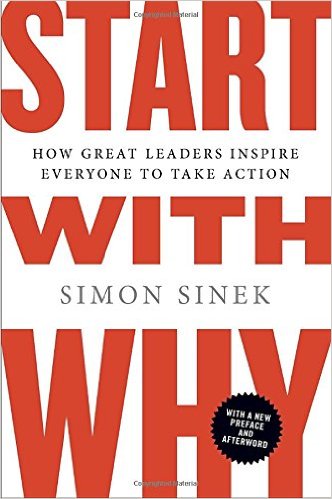Simon Sinek – Why His Work Matters
By Nathan Schor | 305.632.1368 | [email protected]
Simon Sinek made a major improvement to modern marketing, not by adding a new concept, but by reversing the one presently in use. If you’re new to Sinek, it’s easy to come up to speed. Following is a summary of his work relevant to startups. There’s also his popular TED talk, How great leaders inspire action, which is a decent summary of his book and also one of the most viewed talks in TED’s history.
Sinek’s main point is succinctly summarized in the title of his seminal book – Start with Why – where he claims that marketing messages are most effective if they initially and explicitly gives people a reason ‘why’ they need to engage.
Thus, ‘why’ matters most. Once you know ‘why’ about a behavior, everything else – what, how, when, where, who – is merely a matter of logistics.
Consequently, most marketing today is literally backward, since it focuses on the later five communication components, and overlooks the harder, but much more useful, question of why the product is important to users.
Applicable in a wide band of businesses, starting with why is especially effective in creating the compelling marketing communications startups require for attracting customers.
Surprisingly, many firms take a distinctly different path. They first emphasize ‘what’ the product does and ‘how’ it works, and ‘who’ they are, all rational and fact based issues managed by the neocortex.
The problem is ‘what’, ’how’ and ‘who’ inspire analysis, not buying behavior. Purchasing incentive is rooted in the emotions created by the limbic system, governed by a single principle – ‘Why does this matter to me?’. So emphasizing neocortical ‘what/how’ is reversing how the brain actually operates when making any decision; all the more, when assessing buying choices. Action springs from the deep-seated limbic system where emotions run the show, directed by epochs of evolution to filter out anything not self–serving.
EXAMPLE OF “WHY FIRST” AT WORK
With 120 chapters in 60 countries, Startup Grind is a well-regarded global organization dedicated to providing entrepreneurs the resources they need to succeed. A key part of that effort is their annual conference, whose marketing was straight out of Sinek’s play book. Emphasizing ‘why’ up front helped fill a 1200 seat auditorium.
Comparing the present site to its former versions is instructive. Previously, the first text visitors saw was typical of how most sites begin – all about Startup Grind, ‘what’ it is and how great they were. All true and impressive, but not relevant to the reader at the crucial initial stage of engagement.
Despite a credible claim, vendors trumpeting about themselves or the wonders of their product does NOT address the fundamental concern every prospect facing a sales option confronts: What’s in it for me. Why should I care? The site now starts by answering those vital questions with explicit and believable benefits the reader will immediately recognize:
Once the prospective attendee encounters reasons ‘why’ the conference matters, only then are they ready to absorb ‘what’ the conference is and ‘how’ it works. Absent a strong ‘why’ the remaining information on its own isn’t likely to encourage a sale.


